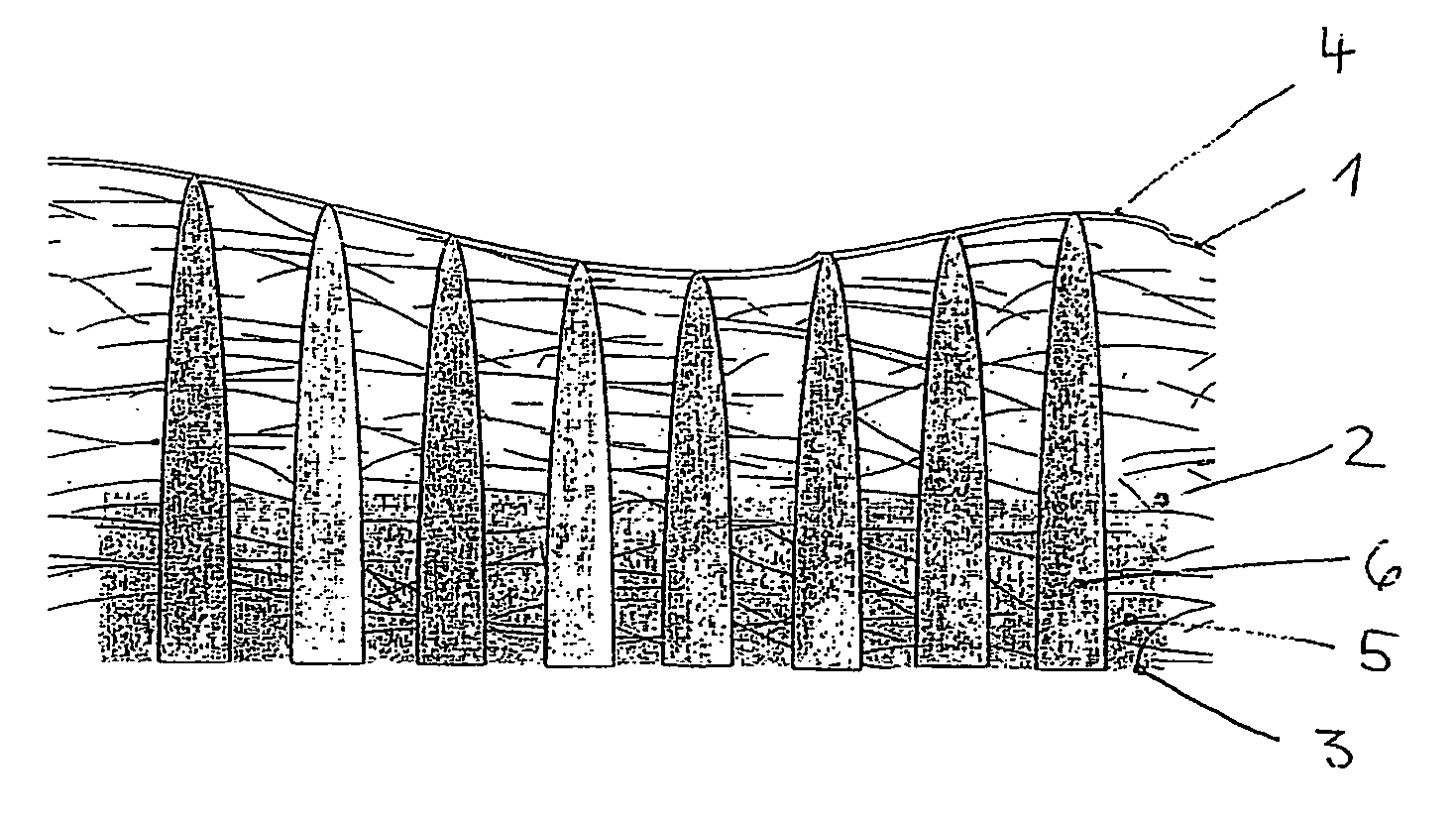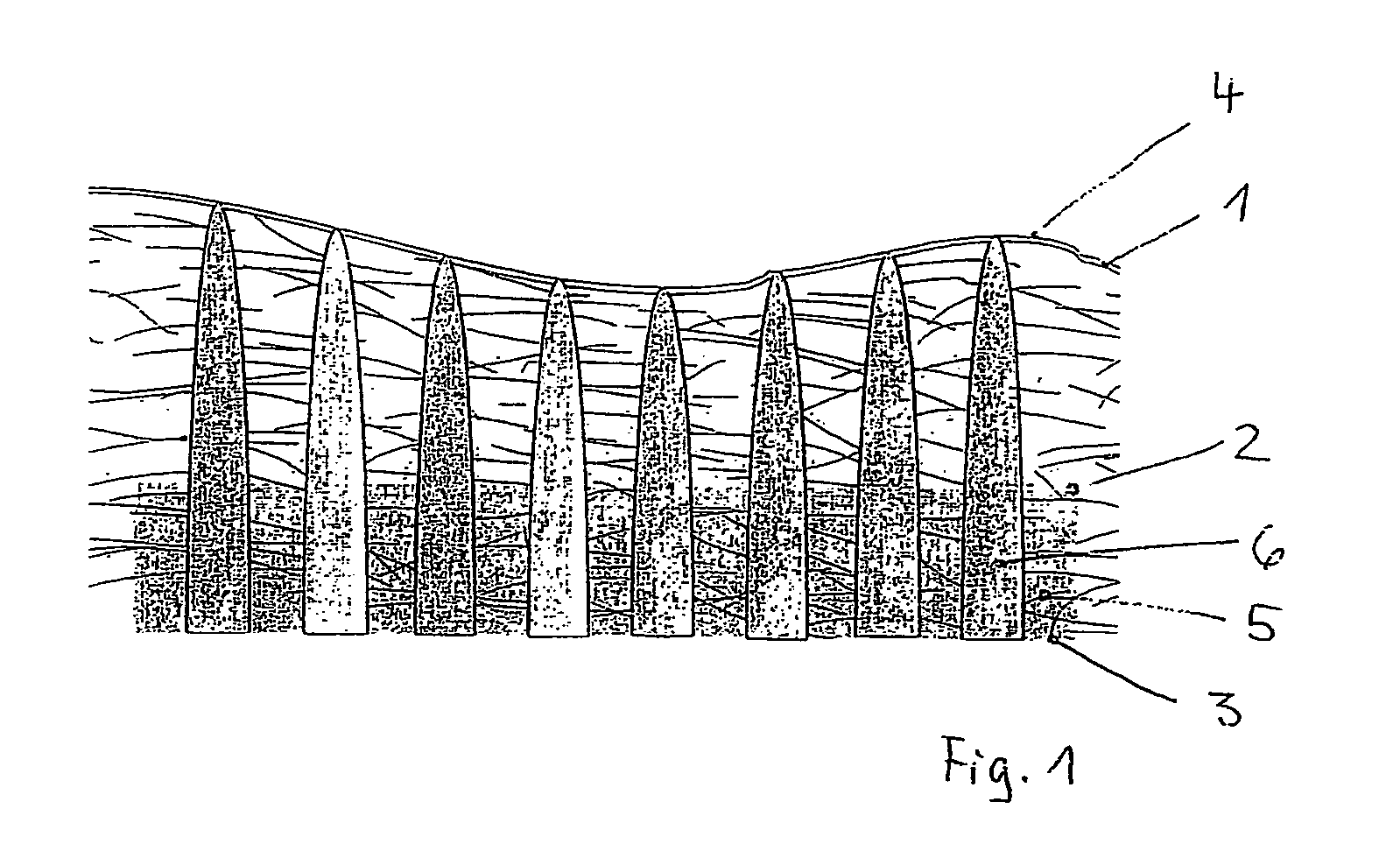Method for applying a pre-weakened line to an interior-trim part in a vehicle by means of a laser, said part being provided with a decorative leather layer
a technology of interior trim and laser, applied in the direction of lamination, domestic articles, animal husbandry, etc., can solve the problems of reducing the tear strength of leather only by about half, affecting the appearance of the interior trim, and undesirable functional threads, so as to prevent visible curling
- Summary
- Abstract
- Description
- Claims
- Application Information
AI Technical Summary
Benefits of technology
Problems solved by technology
Method used
Image
Examples
Embodiment Construction
[0036]In a first embodiment example, a weakened line is separately introduced in an individual leather layer. This can be advantageous, e.g., when a prefabricated dashboard panel provided with an exit opening for an airbag or an interior trim part in a vehicle with edges projecting into the passenger compartment is to be covered with leather.
[0037]The dressed leather is treated with a fixing agent before the actual cutting by laser radiation as is known in principle from the prior art. The fixing agent is preferably applied over the entire surface of the underside 3 of the leather by suitable methods, e.g., brushing on or spraying on, so that any perceptible changes in the leather will not have an effect on the homogeneous overall impression. In order to economize on fixing agent, it may also be applied only along the desired weakened line. Fixing agents whose effect is limited in time and which therefore do not influence the long-term properties of the leather are advantageous.
[003...
PUM
| Property | Measurement | Unit |
|---|---|---|
| angle | aaaaa | aaaaa |
| pressure | aaaaa | aaaaa |
| structure | aaaaa | aaaaa |
Abstract
Description
Claims
Application Information
 Login to View More
Login to View More - R&D
- Intellectual Property
- Life Sciences
- Materials
- Tech Scout
- Unparalleled Data Quality
- Higher Quality Content
- 60% Fewer Hallucinations
Browse by: Latest US Patents, China's latest patents, Technical Efficacy Thesaurus, Application Domain, Technology Topic, Popular Technical Reports.
© 2025 PatSnap. All rights reserved.Legal|Privacy policy|Modern Slavery Act Transparency Statement|Sitemap|About US| Contact US: help@patsnap.com


